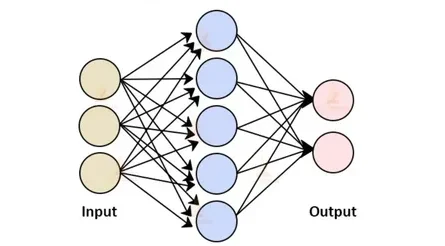Researchers from the University of Oregon have developed a model that can predict the relationships between different neurons by listening to the background activity in the brain. This advancement could greatly improve deep brain stimulation (DBS) treatment for neurological and psychiatric conditions such as Parkinson’s, epilepsy, and depression, by allowing doctors to accurately determine which neurons to stimulate without the need for extensive trial and error.
The findings, published in the journal Physical Review Research, highlight the potential of using the model to optimize DBS treatment, which involves surgically implanting electrodes into the brain to stimulate specific neural circuits and alleviate symptoms. However, effectively using these electrodes is challenging due to the complexity of the brain. Each electrode contains multiple channels that can stimulate different spots, and neighboring neurons often have different roles. Therefore, finding the right spot to stimulate currently involves a time-consuming and risky trial and error process.
Instead of relying on trial and error, they looked for patterns in the background activity of neurons to predict the relationships between specific brain circuits. To do this, they applied mathematical equations originally developed for studying fish populations impacted by fluctuating ocean temperatures. These equations, initially created by biologist George Sugihara, can unravel cause-and-effect relationships between seemingly unrelated variables.
The team collected data on brain activity from the prefrontal cortex of macaque monkeys, obtaining readings of background activity. Using the mathematical equations, they successfully predicted causal relationships between different neurons. To validate their predictions, they stimulated specific brain areas and observed the responses from neurons. The model accurately mapped the relationships between neurons, providing a means to forecast the effects of stimulation in particular areas.
The researchers plan to further explore the implications of these findings by investigating whether the observed causal links between neurons are associated with animal behavior. If successful, it may be possible to predict how stimulating specific parts of the brain will affect behavior. Ultimately, this research could lead to improved treatments for complex neurological conditions, either through advancements in DBS or the development of brain-machine interfaces that facilitate two-way communication between the brain and a computer.
The ability to predict the relationships between neurons using this model has significant implications for the field of neuroscience. It could revolutionize the way DBS treatments are conducted, minimizing risks and optimizing outcomes for patients. Moreover, it offers exciting possibilities for the development of personalized therapies and interventions for neurological and psychiatric disorders.
Note:
1. Source: Coherent Market Insights, Public sources, Desk research
2. We have leveraged AI tools to mine information and compile it



